What is a corn seeder: operating principle, review of the best models and instructions for making it yourself
Corn requires even placement of seeds in a row, so each plant is given the same conditions for germination. For more efficient sowing, seeders are used. There are many models of equipment available on the market with various options for additional equipment. This allows you to customize the machine to the needs of each farm. Let's look at what types of corn seeders there are and how to make them yourself.
What is a corn seeder
A corn seeder is equipment that sows seeds into the soil. Before their appearance, this was done manually: grains were scattered in the field, trying to fill empty spaces. However, it is impossible to sow evenly by hand. For this purpose, special equipment is used - mechanical seeders.
How does she look
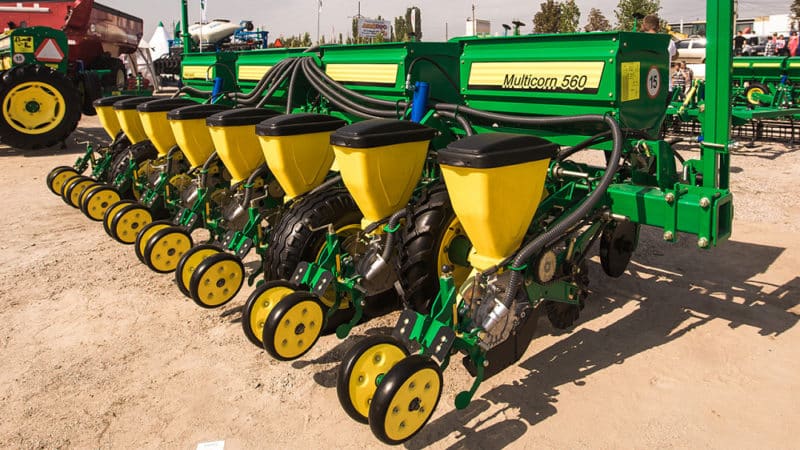
The design of the corn seeder consists of the following parts:
- frame mounted on wheels;
- sections with seeds;
- seed storage;
- dosing devices.
Depending on the number of sections in the seeder models, the planting row is determined. To adjust it, just remove or add drums to the frame. The technology for planting various types of corn depends on this.
Reference! With cross sowing technology, when the seeder goes along and then diagonally or across the field, sections are removed from the frame.
All corn seeders come in 3 types:
- universal - they work using seeds of various crops, but do not apply fertilizers;
- combined - add seeds to the soil along with fertilizers;
- special - use only 1 type of seeds.
All devices consist of the following sections:
- compartments for seeds (usually 1-2);
- a mechanism that closes furrows;
- coulter, with the help of which grooves are made in the ground with the same depth;
- a sowing apparatus that delivers seeds in uniform portions into special seed tubes.
Principle of operation
Each seeder has a similar operating principle:
- Seeds are fed into the machine.
- Placed in the soil at the required depth and at an equal distance from each other.
- They are sealed using a special mechanism.
A pneumatic mechanism is used to crush and remove lumps. To be able to use the seeder on a problem field, crop residues are cut with special discs. After this, the skid coulter enters the ground without problems.
This is interesting:
Types of seeders and their design
Types of equipment differ in size, design and sowing methods. If large seeders are suitable for large farms, then in the garden a attachment for a walk-behind tractor is sufficient.

Trailed/mounted
According to the method of attachment to the equipment, trailed and mounted seeders are divided. The former require less productive machines to operate. For example, a tractor with a power of 45–60 hp. With. or seeding devices Kinze 3000, MT-8, YP-1630F, which have a power of 80 hp. With. They are aggregated with an eight-row YP-825 130 liter seeder. With.
Attachments are used to work with productive machines of at least the second class and tractors with high power (250–320 hp and 200–220 hp).
Mechanical/pneumatic
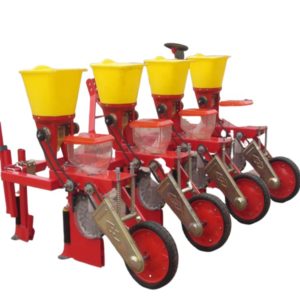 Corn sowing occurs in a dotted manner. In this case, seeders have a pneumatic or mechanical mechanism.
Corn sowing occurs in a dotted manner. In this case, seeders have a pneumatic or mechanical mechanism.
Mechanical seeders are gradually becoming obsolete and disappearing into oblivion; in many countries they have already been discontinued. To change the types of seeds, you have to completely dismantle the working panel and adjust the row spacing in a new way. There is simply not enough time for such a procedure.
Pneumatic corn seeders have a more advanced design, which includes:
- lump remover;
- furrow filler;
- compaction wheel;
- wedge tip;
- skid opener.
Her labor productivity is much higher with minimal time investment. Fertilizers are added along with the seeds. Among the significant disadvantages are:
- high price of the seeder;
- insufficiently effective work on problematic grounds;
- impossibility of use in fields where there are a lot of roots in the ground.
Manual/for walk-behind tractor/for special equipment
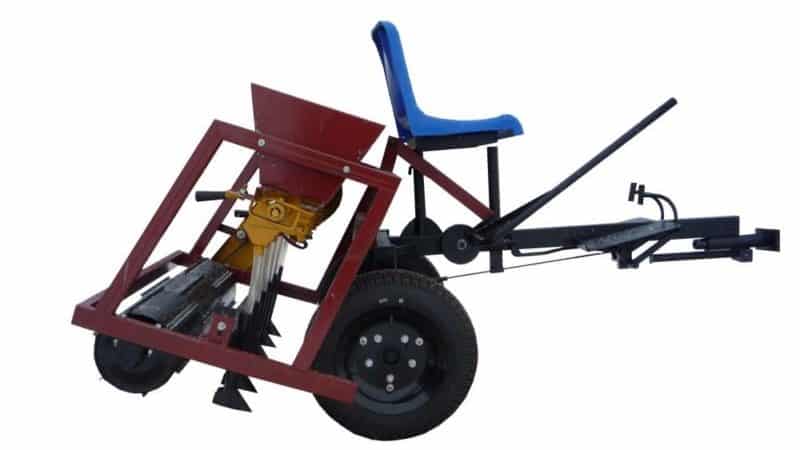
Handheld devices — one of the most popular for sowing corn in small areas. Used in medium and small farms. They are characterized by high productivity: 0.5 hectares are sown in one day, provided that the land is prepared. They operate using a seed disc or plate at the bottom of the seed tank.
Seeders for walk-behind tractor allow seeding to be done in even steps in each row. To use them, holes are made in advance at a selected distance. Use devices only on loose and soft soils. Do not use on clay and heavy soil. The simple design is too heavy and bulky.
Seeders for special equipment are multifunctional.With their help, several types of corn are sown at once, simultaneously covering the maximum number of rows, the seeds are distributed over the marked holes, they are fertilized and covered with soil. This equipment has large dimensions and weight; it is used only on tractors and other machines with a power of 45 to 320 hp. With.
Read also:
Tasty and sweet variety of corn "Bonduelle"
Popular brands
Let's look at the main characteristics of well-known models of corn seeders.
Gaspardo
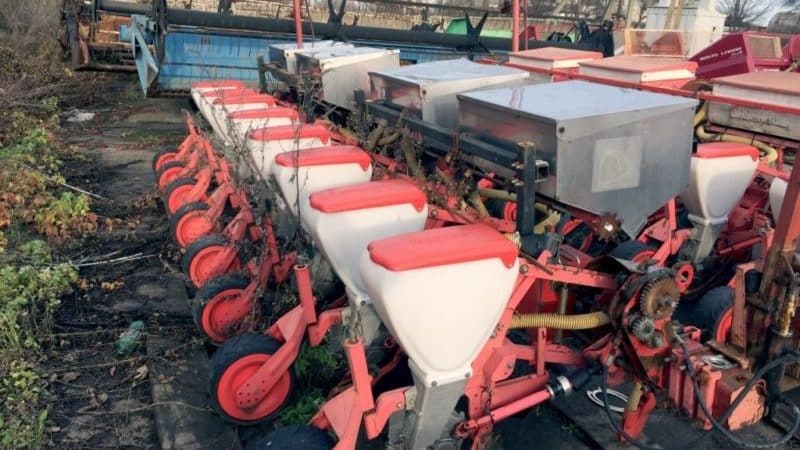
The Italian unit is distinguished by its original placement of seeds in the soil. The equipment has a double grain switch with adjustment to sow processed seeds and irregularly shaped or sized seeds. The seeding depth is adjusted mechanically using a special handle. The seeds are pressed into the soil in a stainless steel circle. This solution ensures uniform growth of cereals.
Interesting! The model has a seeder module setting for various types of crops and land. The gearbox of the gearbox allows for simple and quick installation.
MT-8 has a fertilizer sowing system with dosing capabilities from 50 to 700 kg/ha.
The price of the model is 450–1400 thousand rubles. According to reviews, this is one of the most popular brands among its peers. The only one with special seeding sensors, it practically does not break. Parts are sold at low prices.
Amazone
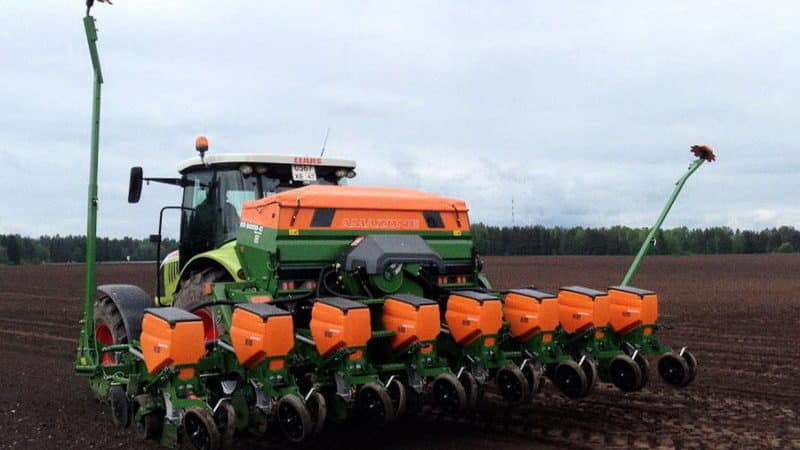
The German manufacturer has two models of machines for sowing corn: ED and EDX. The second is intended for growing in large areas, where time is very important. The operating speed of the equipment is 15 km/h.
ED models are available with 4, 6, 8 or 12 rows.Seeds are placed in the soil according to the principle of air suction. The vacuum pulls the grains into the holes and places them in the ground. The seeders are equipped with a central seeding drive. The gear train has 36 steps - depending on the discs used, intervals from 2 to 53.8 cm are obtained.
The price of the device is 2.5–10 million rubles. According to farmers' reviews, the brand is considered one of the most reliable. There are practically no negative aspects mentioned, apart from the high price.
"A red star"

The Ukrainian plant "Krasnaya Zvezda" produces a model for sowing corn SUPN-8, which places fertilizers in a special furrow, sprinkles them and produces high-precision sowing of corn seeds, creating optimal conditions for them to grow. Seeder productivity is 3.36–3.9 ha/h at a flow rate of 2 to 16 kg/ha.
Cost - 295–599 thousand rubles. The positive aspects include a fairly low price and cheap spare parts. Among the disadvantages are frequent breakdowns.
"Lidselmash"
The Belarusian manufacturer produces the SPCh-6 model with precision seed sowing and use for row crops. Like SUPN-8, it allows you to place fertilizers in the furrows. The maximum number of rows is 6 (with a storage volume of 20–30 liters, a flow rate of 3-7 pieces/m and a furrow width of 45–70 cm).
Price - from 260 thousand rubles. Among the advantages, farmers note the relatively low price and the availability of a transport device. The disadvantages are the inability to use fertilizers during sowing, the device’s “dislike” for wet weather and the ability to work only on perfectly prepared soil.
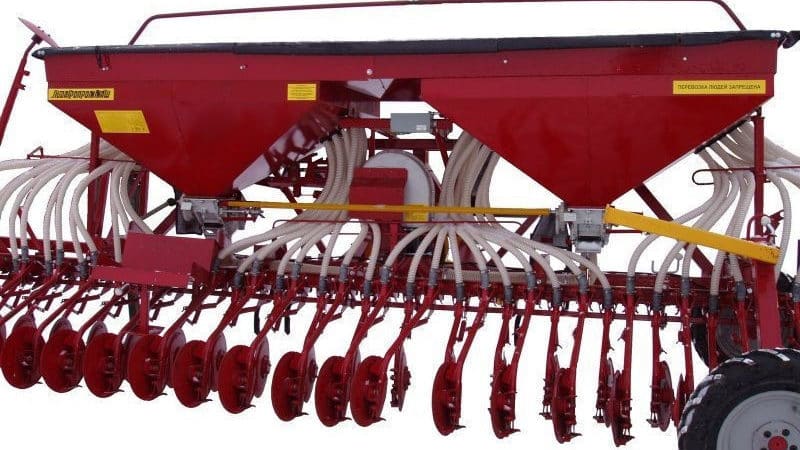
John Deere
The American company produces model 7000, which operates on a mechanical principle. The seeder weighs 3.85 tons. The unit has an 8-row structure with a storage volume of 56 liters. Price - from 1.5 million rubles.
There are practically no negative reviews of John Deere seeders on the Internet. Most owners of this model have no complaints about it, but point out the high price and the fact that in rainy weather the device becomes clogged with stuck damp earth.
How to make a do-it-yourself corn seeder
A DIY seeder is an easy-to-use piece of equipment. The selection of materials for the device depends entirely on the designer’s flight of fancy, although there are basic principles.

What to use to create a design
To make a seeder with your own hands, it is important to know its design. You will need:
- steel sheets 2.5 mm thick and about 1 m in size2;
- latch, furniture hinge and glass cover;
- vomer;
- galvanized steel box (seed container)
- M6 screws and M5 bolts;
- 1-2 wheels;
- brush.
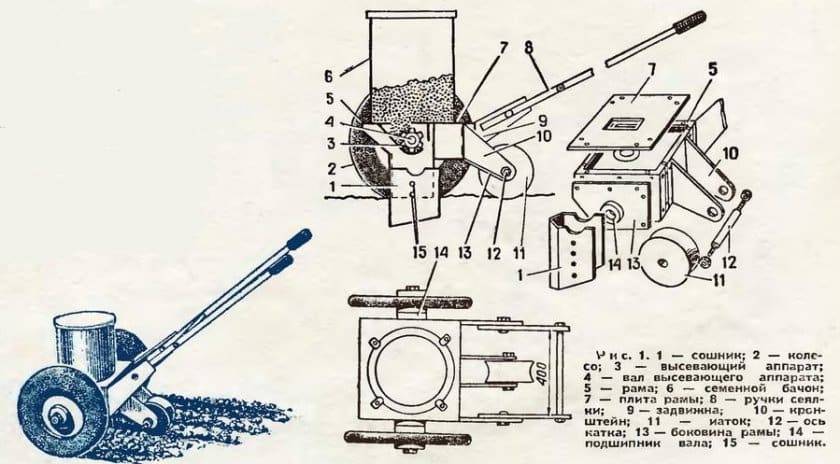
Seeder components and step-by-step instructions
For a homemade seeder you will need:
- a hopper into which seeds are loaded;
- one or more wheels for moving the seeder;
- grain dispenser sleeve;
- frame for mounting distribution mechanisms and wheels;
- blindly drilled holes along the edges of the seed sleeve through which filling occurs.
Creation instructions:
- Drill holes in the sowing shaft in 3 rows with different diameters that correspond to the types of seeds.
- Take a seed container and adjust the frame according to its size.
- Insert the sowing shaft into the holes with a diameter of 28.05 mm drilled on the sides from the bottom.
- Secure the grain container with bolts and attach a brush above it to regulate the sowing density.
- Adjust the correct configuration for the trapezoidal container with truncation and required holes.
- Attach the lid to the top of the tank using a furniture hinge and a special latch.
Read also:
Calorie content of corn and features of its composition
Conclusion
Precision seeders for corn cost a lot: it is easier for private owners to rent a unit or buy one together with their neighbors. When choosing a specific model, pay attention to the equipment that is suitable for the specific soil.
It is not recommended to skimp on some pieces of equipment: for example, the ability to fertilize the land or the hectare counter - this option is especially important if you are going to open a business providing a new seeder for use.